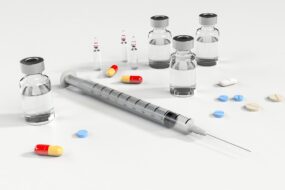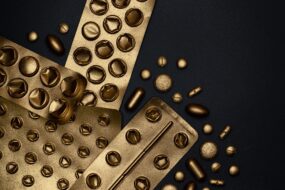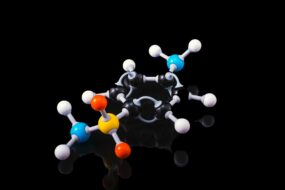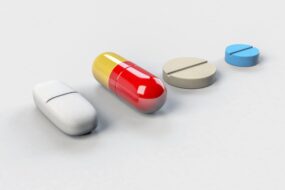- Home
- DRUGS
- Drugs acting on infectious Agents
- Erythromycin
Erythromycin is isolated from Streptomyces erythreus. The water solubility of erythromycin is limited, and the solution remains stable only when kept in the cold.
Mechanism of action
- Bonds to 50 s subunit of bacterial ribosomes and inhibits bacterial protein synthesis by preventing attachment of aminoacyl transfer RNA to its acceptor site on ribosomes.
- This prevents peptide bond formation by a peptidyl transferase.
Indication.
The antimicrobial spectrum is narrow,
- Str. pyogenes and Str. pneumoniae, N.gonorrhoeae, Clostridia,
- C. diphtheriae and Listeria,
- Penicillin-resistant Staphylococci and Streptococci are now resistant to erythromycin also.
- Gardnerella vaginalis and Mycoplasma are not affected by penicillin but are highly sensitive to erythromycin.
Resistance
- Acquire the capacity to pump out the drug.
- Resistant Enterobacteriaceae have been found to produce an erythromycin esterase hence resistance.
- Alteration in the ribosomal binding site for erythromycin by a plasmid-encoded methylase enzyme by gram-positive bacteria.
- All the above types of resistance are plasmid-mediated.
- Change in the 50S ribosome by chromosomal mutation reduces the macrolide binding affinity in some gram-positive bacteria.
- Bacteria that develop resistance to erythromycin are cross-resistant to other macrolides such as clindamycin.
Adverse effects
- Gastrointestinal epigastric pain is experienced especially by children on oral ingestion.
- Diarrhoea is occasional.
- Reversible hearing impairment.
- Hypersensitivity; rashes and fever.
- Hepatitis with cholestatic jaundice resembling viral hepatitis and extrahepatic biliary obstruction occurs.
- Ventricular arrhythmias with prolonged QT interval.
- Stevens-Johnson and toxic epidermal necrolysis.
Drug interaction.
- Interactions of Erythromycin inhibit the hepatic oxidation of many drugs. Ie.—rise in plasma levels of theophylline, carbamazepine, valproate, ergotamine and warfarin.
- The clearance of zopiclone is reduced.
Clinical Uses
- Alternative to penicillin in; Streptococcal pharyngitis, tonsillitis, mastoiditis and community-acquired respiratory infections caused by pneumococci and H. influenzae.
- As a second choice drug in;
√Campylobacter enteritis reduces the duration of diarrhoea and the presence of organisms in stools.
√Legionnaires’ pneumonia: 3-week erythromycin treatment is effective.
√ Chlamydia trachomatis infection of urogenital tract.
√ Penicillin-resistant Staphylococcal infections.
Dosage.
- 250–500 mg 6 hourly (max. 4 g/day), children 30–60 mg/kg/day.
- Erythromycin (base): ERYSAFE 250, mg tablets, EROMED 333 mg tablets 125 mg/5 ml suspension.
- Erythromycin stearate: ERYTHROCIN 250, 500 mg tab, 100 mg/5 ml suspension., 100 mg/ml pediatric. drops. ETROCIN, ERYSTER 250 mg tablets, 100 mg/5 ml dry syrup.
- Erythromycin estolate (lauryl sulphate) is relatively acid-stable and better absorbed after oral administration.












